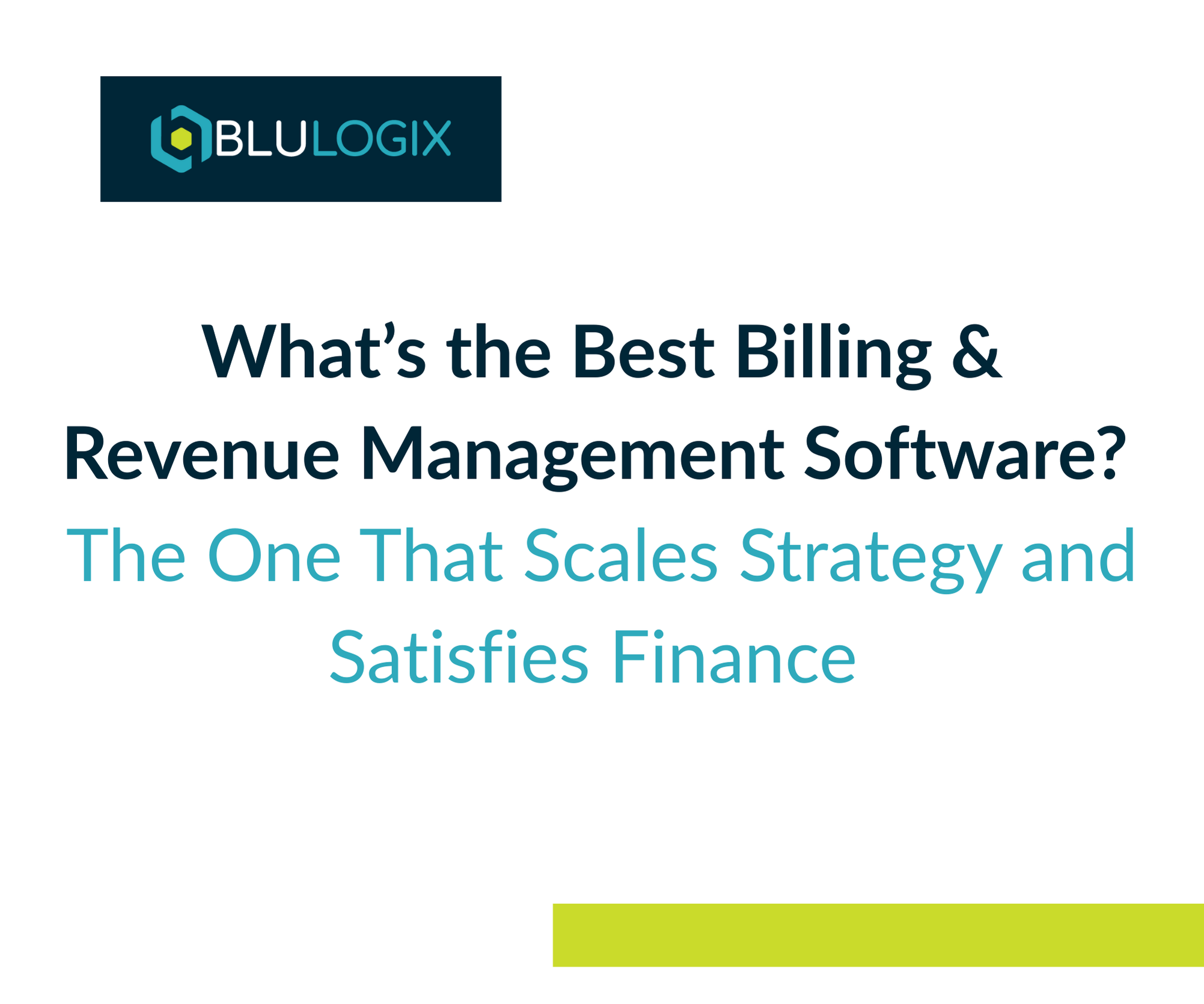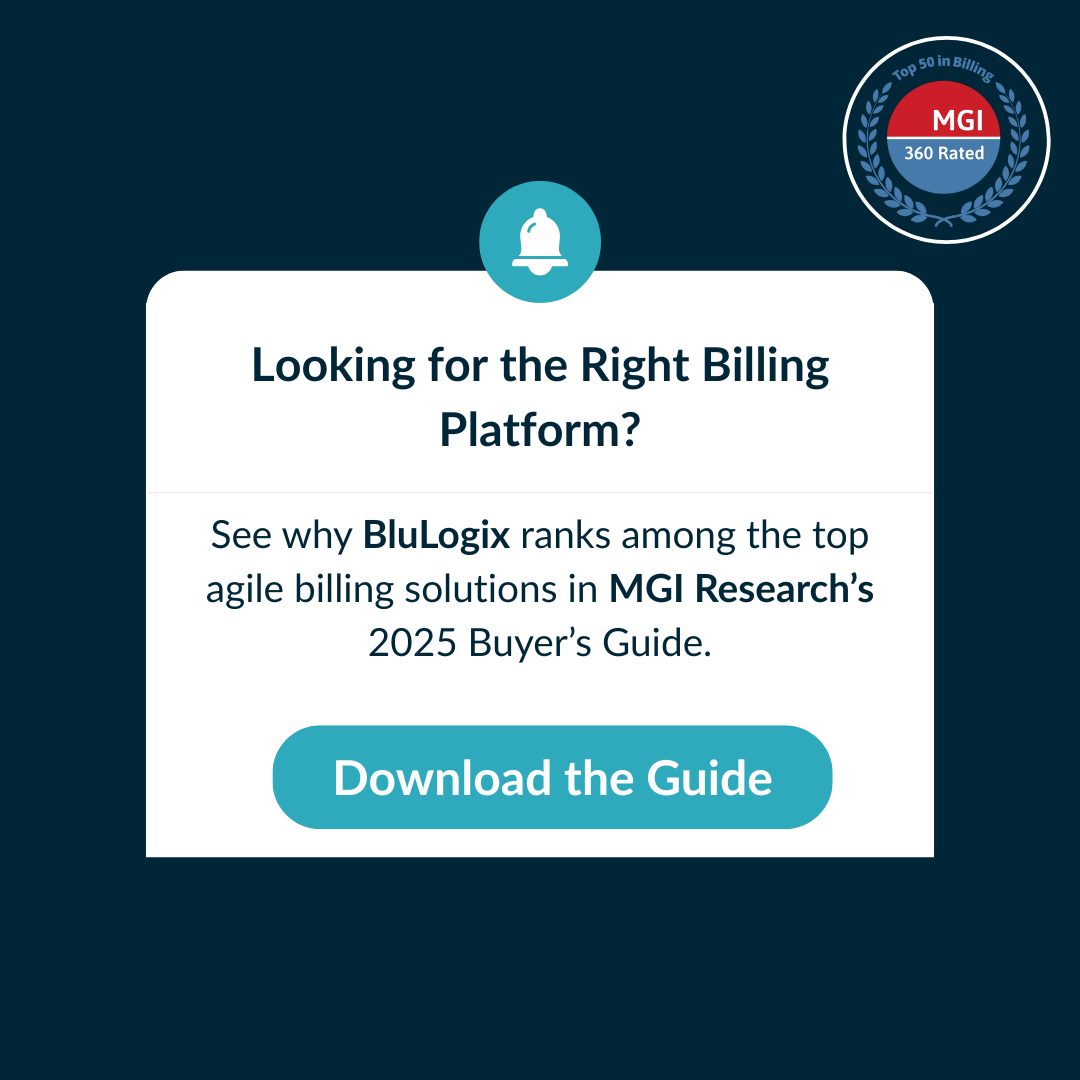Major Pitfalls To Avoid on Your Recurring Revenue Journey
Recurring revenue has become the gold standard for many organizations in the Software-as-a-Service, IoT and Cloud Computing industries as shareholders and customers alike are increasingly satisfied with this new way of doing business. Customers of organizations that generate recurring revenue appreciate that these businesses only charge clients for what they need and nothing more. Shareholders know that a dollar generated by recurring revenue is more valuable than a dollar generated by transactional revenue.
See BluIQ's Subscription Management
But what about organizations that do not yet have streams of recurring revenue? Many of these businesses wish to deploy infrastructure to enable recurring revenue. Before doing so, stakeholders within these businesses need to understand the challenges they may face during their transformation. As legendary inventor Alexander Graham Bell once said, “Before anything else, preparation is the key to success.”
In the journey to recurring revenue, there are pitfalls along the way that can cause failures in implementation. However, those pitfalls can be avoided with due diligence. By being prepared and having those challenges on the radar, a business can guarantee themselves a successful transition into recurring revenue. In this article, we identify three major pitfalls businesses can face in the recurring revenue journey and effective strategies for avoiding them.
Executive Alignment
In the journey to recurring revenue, a digital transformation is required which will touch every person, division and aspect of a business. This transformation will change a business’s behavior, strategic relationships, and positioning within ecosystems. It will do so for the better — enabling scalability, improving efficiency, and generating higher revenue.
Given the all-encompassing impact of the digital transformation required on the journey to recurring revenue, the journey must be led from the top down. Leadership within an organization has to be the guiding light throughout the transformation. This leads us to our first pitfall: failure to ensure executive alignment. Businesses that attempt the transformation to recurring revenue will limit potential or even fail if executive alignment is not a priority.
During a digital transformation, organizations will see pockets of resistance internally. People do not like change, it is natural to prefer the familiar over the unknown. This reality extends into the professional sphere. Employees may feel threatened by the transformation and internal challenges may arise. To mitigate any internal uneasiness, the highest executive within an organization must lead the charge, followed by senior executives.
This executive alignment, where leadership is on the same page and effectively communicates the why and the how of a recurring revenue journey to their teams, is the first step in mitigating challenges along the way. When a CEO buys into digital transformation, it paves the way for cultural adaptability.
Cultural Adaptability
The second pitfall we often see along the journey to recurring revenue is a failure to induce cultural adaptability. Cultural adaptability unquestionably hinges on executive alignment, making the two factors crucial and inseparable in a digital transformation. So, what exactly is cultural adaptability?
Stemming from executive alignment, cultural adaptability is a pervasive attitude of embracing change with an open mind and an eye toward the future of a business. When executives champion change and clearly communicate the incentives of a digital transformation, team members within an organization are much more open to adapting to the needs of a recurring revenue model, even if it means major adjustments to their workflow and objectives.
Cultural adaptability is not only about intangibles. Digital transformation can require an investment in new talent and skills and executives must be willing to make those investments. New talent can be anything from hiring a round of entry level employees to bringing aboard new senior executives. It can also be the skill development of existing employees or forming new partnerships with experts to help complete your journey.
With the right mindset and a willingness to invest in talent, the benefits become reinforcing as a self-perpetuating cycle of excitement and buy-in begins to consume the organization’s culture. What you will find is that even the stakeholders who initially showed reluctance become motivated by change and opportunity. At this point, the digital transformation gains full traction internally.
Building for Tomorrow
The decision to move a business model toward recurring revenue is a strategic one, executed with interest in a company’s future in mind. Many of the world’s leading technology companies have already begun digitally transforming to prepare themselves for the future. Gartner Research has even predicted that by 2022, more than 90% of software providers will have migrated to subscription-based business models (a popular method for generating recurring revenue).
However, the decision to phase into recurring revenue alone is not enough. The entire execution of a digital transformation needs to accommodate the future of a business. The third pitfall we see most often is a failure to plan for tomorrow, beyond simply making the decision to undertake the recurring revenue journey.
Yes — digital transformation enables recurring revenue. However, organizations need to adapt business models, services, and operations to maximize potential. This requires a willingness to change a business in very significant ways. It can be comfortable and reassuring to continue to think of your company’s behavior as it was pre-transformation. But the truth is that the recurring revenue journey requires more than a change in mindset and culture.
Businesses must rethink their productization process. Digital transformation includes identifying new revenue streams and channel opportunities, finding a new audience, welcoming and trusting workflow automation, improving profit margins, and replacing legacy tools with new, more advanced resources. Organizations need to consider repackaging their services, bundles, and products to better suit subscription or consumption-based models. They should also understand the value of monetizing their data. All of this requires a business to see itself in a new light while prioritizing the longer term. It’s more than a cultural adaptation. It is an entirely new go-to-market strategy designed for what the company will be capable of offering — not what it currently offers.
See BluIQ's Subscription Management
Are you ready to start the recurring revenue journey?
The recurring revenue journey calls for major changes to an organization. Those changes are necessary to keep pace with ever-evolving technology-driven industries. Additionally, they significantly improve the revenue potential of any business. It is no wonder that Gartner Research predicts massive adoption of recurring revenue models in the coming half-decade.
If your business is looking to stay ahead of the trends and maximize revenue, then a digital transformation is what you need to ensure a successful implementation of a recurring revenue model. If you would like to learn more about the challenges you will face in your digital transformation and successful tips for your recurring revenue journey, view our TSIA Interact webinar covering all the things that can go wrong on your journey.
If you would like to speak to a digital transformation expert about how BluLogix can empower your company’s recurring revenue initiative, reach out to a representative today.
Learn more

What’s the Best Billing & Revenue Management Software? The One That Scales Strategy and Satisfies Finance

Features That Power Complex B2B Contracts — And How BluLogix Delivers Them



